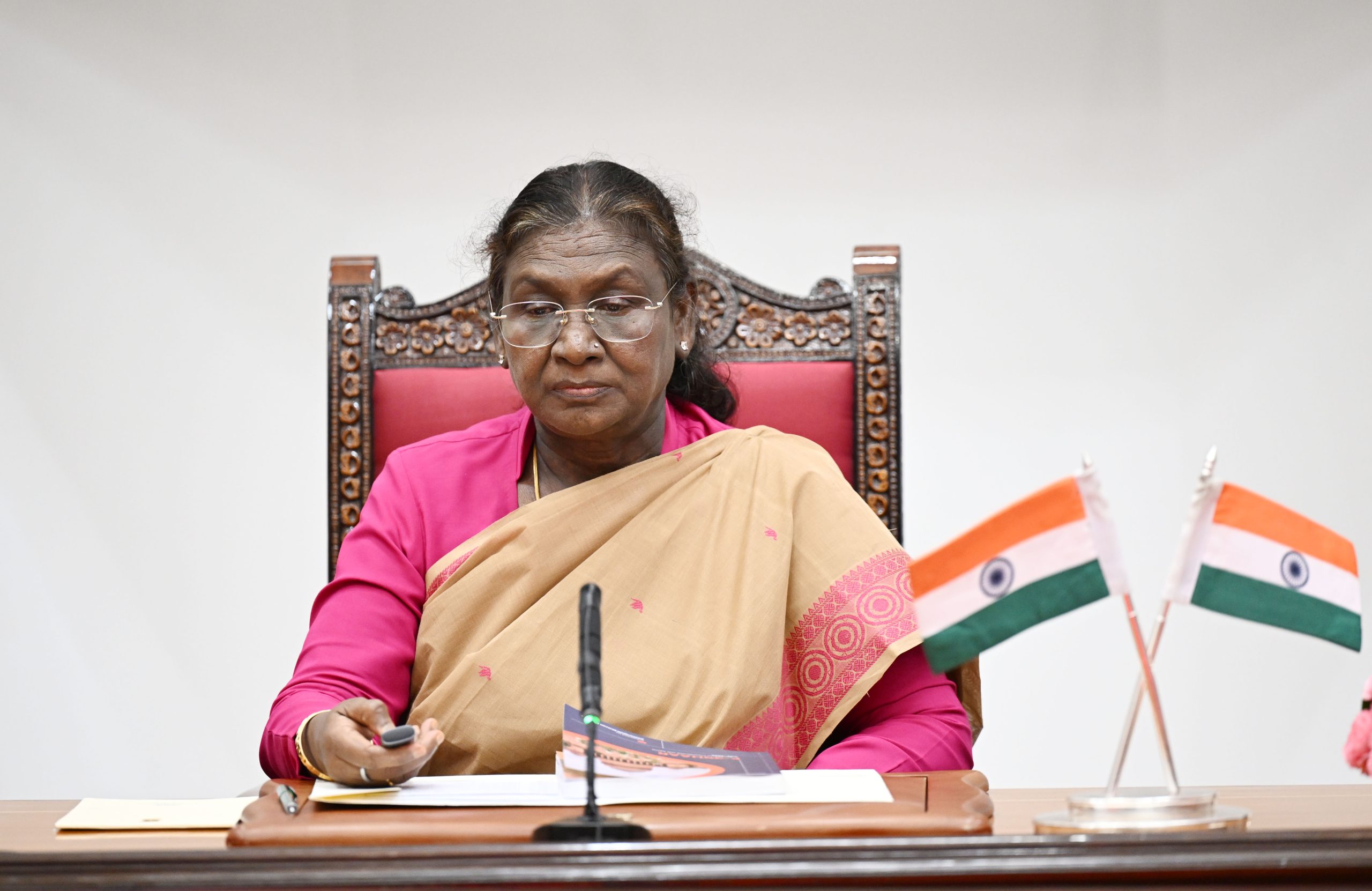President Droupadi Murmu completed three years in office today, marking the occasion with the launch of several key initiatives aimed at enhancing accessibility, public engagement, and sustainability at Rashtrapati Bhavan.
To commemorate the milestone, President Murmu participated in a series of programmes at the President’s Estate, highlighting her administration’s ongoing efforts to connect the institution with citizens and promote inclusivity. A significant announcement was the declaration of Rashtrapati Bhavan, including the Amrit Udyan and Rashtrapati Bhavan Museum, as Divyangjan-friendly. This transformation followed the implementation of 50 recommendations made by the Pt. Deendayal Upadhyay National Institute for Persons with Physical Disabilities.
In a major digital outreach effort, the official websites of Rashtrapati Bhavan — rashtrapatibhavan.gov.in and presidentofindia.gov.in — are now available in 22 Indian languages, ensuring wider accessibility for citizens across the country.
The President also inaugurated several visitor and resident amenities across the President’s Estates, including a Visitor Facilitation Centre at Rashtrapati Bhavan, Nilayam Nikunj at Rashtrapati Nilayam in Hyderabad, a cafeteria, souvenir shop, and reception area at Rashtrapati Niwas in Mashobra, as well as a renovated gym within the President’s Estate.
Among the other highlights was the launch of the second season of the “E-Upahaar” initiative — an auction of over 250 items. Proceeds from the auction will go toward child welfare initiatives. An e-book capturing glimpses of the Presidency’s activities over the past year was also released.
Further, the President announced the commencement of efforts to make Rashtrapati Bhavan a Net Zero energy campus by March 2027, underlining the institution’s commitment to sustainability.
Speaking on the occasion, President Murmu expressed satisfaction over the progress made in the past three years, particularly in making Rashtrapati Bhavan more accessible and citizen-centric. She noted that several decisions and initiatives during her tenure have deepened public engagement and brought marginalized communities closer to the national development narrative. She voiced confidence that more such inclusive and forward-looking initiatives would follow in the coming years.










